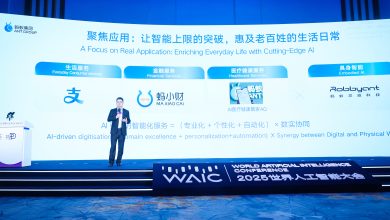Neo4j Announces Collaboration with Microsoft to Advance GenAI and Data Solutions

Neo4j®, a Graph Database and Analytics leader, announced a collaboration with Microsoft to deliver a unified data offering that addresses customers’ critical data needs for Generative AI (GenAI). Specifically, the collaboration will see Neo4j’s powerful graph capabilities natively integrated into Microsoft Fabric and Microsoft Azure OpenAI Service to seamlessly combine structured and unstructured data, and enable customers to uncover hidden patterns and relationships within their data for better insights and decision-making, all as part of a comprehensive solution.
“By 2025, graph technologies will be used in 80% of data and analytics innovations — up from 10% in 2021 — facilitating rapid decision-making across the enterprise,” predicts Gartner® in its Emerging Tech Impact Radar: Data and Analytics 20 November 2023 report. 1Gartner also notes, “The ability to discover and document data use cases and help build knowledge graphs out of data uses is becoming a vital capability. It is the first step to resolving fragmented data management issues by enabling a GenAI-augmented data fabric,” in its 23 January 2024 report titled Innovation Insight: How Generative AI is Transforming Data Management Solutions.
Azure OpenAI Service enables businesses to use advanced AI models and tools that unlock the full potential of their data. Microsoft Fabric is an AI-powered analytics platform that enables everything from data movement to data science, real-time analytics, and business intelligence. Customers benefit from the integration of Neo4j’s graph database within Azure OpenAI and Microsoft Fabric in the following ways:
- Transform unstructured data into knowledge graph: Developers can use OpenAI Service to process unstructured data, structure it, and load it into a knowledge graph. Once in a knowledge graph, users extract insights leveraging Neo4j data visualisation and query tools like Bloom or use Neo4j connector with Power BI for business intelligence (BI).
- Enhance contextual understanding and explainability with GraphRAG: With Neo4j’s GenAI functions, Azure OpenAI Service can be used for fully integrated GraphRAG applications, whereby LLM queries can be used against enterprise data in knowledge graphs. GraphRAG is an enhanced form of Retrieval Augmentation Generation (RAG) whose results demonstrate intelligence or mastery that outperforms other approaches previously applied to private datasets. Enterprises can also use Gen AI orchestration platforms like LangChain and LlamaIndex to build intelligent GenAI applications.
- Long-term memory for LLMs with vector embedding integration: Neo4j provides long-term memory for large language models by supporting native vector embeddings. Neo4j has inbuilt support for vector storage and search capability for intelligent GenAI applications. Developers can now natively use Azure OpenAI embedding APIs to create embeddings and store them in the Neo4j Database.
- Graph-powered insights as part of Microsoft Fabric unified data platform: Microsoft Fabric customers can now use Neo4j Graph Database and Analytics capabilities to discover hidden patterns and relationships deeply, easily, and quickly. Developers can implement Azure Data Factory to ingest data from OneLake into Neo4j, extract data from Synapse Data Warehouse using the Neo4j data warehouse connector, run Graph Data Science algorithms from Synapse Data Science Notebooks, and leverage Power BI to build interactive dashboards on Neo4j Knowledge Graphs.
- Graph Analytics as native Fabric workload: Neo4j and Microsoft Fabric teams are working together to deliver Neo4j as a native workload for Graph Analytics on Microsoft Fabric platform. This will enable users to access graph analytics workload directly from the Microsoft Fabric console, create Graph models from OneLake data, analyse Graph data, run Graph Data Science Algorithms using Neo4j Bloom, and write back results into OneLake for a seamless end-to-end integration.
Neo4j’s Azure OpenAI Service integration is generally available now. The integration of Neo4j’s graph database into Microsoft Fabric will be generally available later this year.
Neo4j also announced the general availability of Neo4j’s fully managed graph database offering AuraDB on Azure Marketplace, giving developers a frictionless, fast-start experience on generative AI. Azure Marketplace offers thousands of industry-leading software and services that are certified and optimised on Azure.
For more information about Neo4j’s collaboration with Microsoft, read our blog post or visit the Neo4j booth #307 at Microsoft FabCon, March 26-28.




